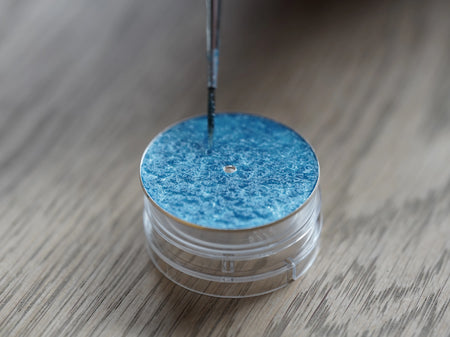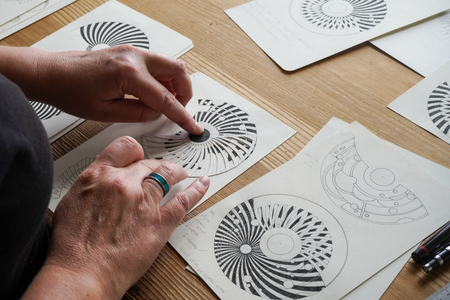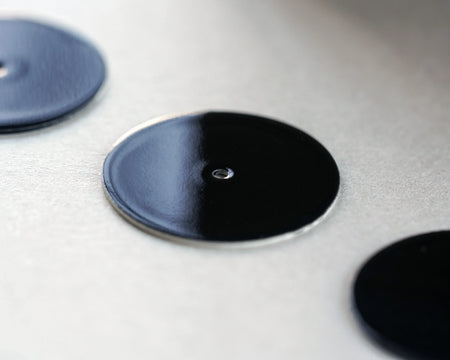Fumé quite simply means smoked, and is used to describe a dial that gradates from a solid hue in the centre to a dark rim. The effect is striking, and suggestive of a fuliginous patina that evokes a sense of age. We appreciated the parallels between our fumé dial, which sprang from a mistake, and the phenomenon of tropical dials, so named for their years of UV exposure which lends a bleached appearance - of interest to us, as it proves how a moment of happenstance can establish itself as a meaningful and distinct artifact.
To recreate our fumé effect in a reliable way and without warping the underside, we started to design a metal blank on which to enamel. Designing it was fairly easy, finding someone willing and able to make it was not. Eventually we prevailed, and were off to Birmingham, as Struthers Watchmakers had provided us with a contact.
Birmingham's jewellery quarter is a pretty unique place, and still the centre of jewellery work in the UK though just a fragment of its scale in days gone by. We visited a company that had been operating in the same building since the 1700s, and in the basement of a 300+ year old metal-based crafts factory, found a man with a solution. From stamping and engraving to enamelling and painting, this museum-like building once would have been filled with hundreds of skilled craftspeople, today there are about twenty. In cellars that seemed to go on forever, the stamping room held the most amazing collection of stamping dies, and stamps for coins and medals and badges, dating back as far as the 1690s!
Watch dials were new to this old factory, so we spent some time discussing and working out how we could adapt the process, and after some trial and error we began to get results. The silver dials are stamped to our specification using ancient machinery intended for coins and medals, and brought back to Glasgow to be enamelled.







